SOLOMON vision AccuPick 3D Alternatives & Competitors
Ranked Nr. 12 of 85 Robot Software

Top 10 AccuPick 3D Alternatives
- SOLOMON vision Solvision
- SOLOMON vision AccuPick 2D
- COGNEX In-Sight Explorer Software
- soft agile Soft agile metrics SDK
- WEPALL Universal Palletizing Software

SOLOMON vision Solvision
VisionWide range of AI visual inspection applications
Solvision has delivered outstanding results in the semiconductor, LCD display, footwear, textile, automotive, welding, and a wide range of other industries. Its flexibility has allowed it to be implemented in several applications such as defect inspection, presence detection, counting, classification, optical character recognition, and many more.
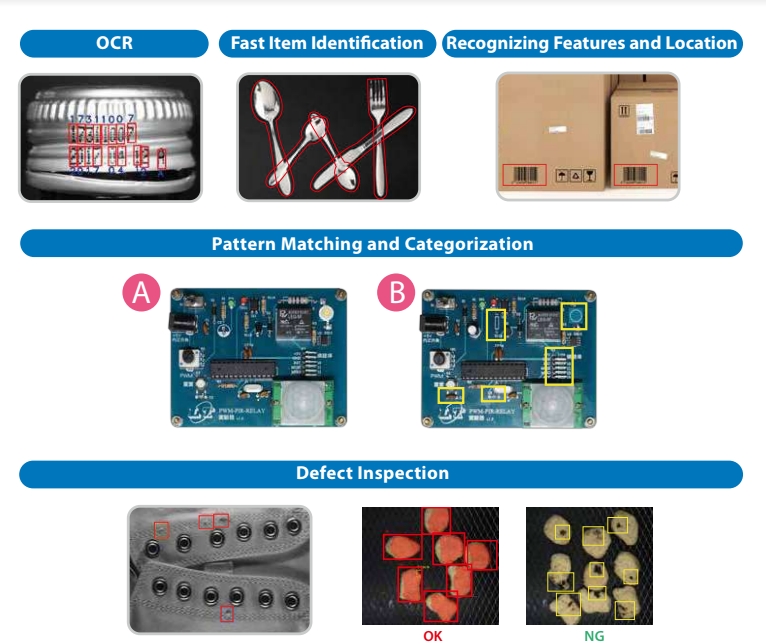
Few training samples for deep learning required
Solvision offers many easy-to-use data augmentation tools that allow users to simulate different real-life scenarios. Needing only 1/10 of the samples typically required by AI inspection software, our vision solution significantly reduces the amount of time that engineers have to spend during the labeling process.
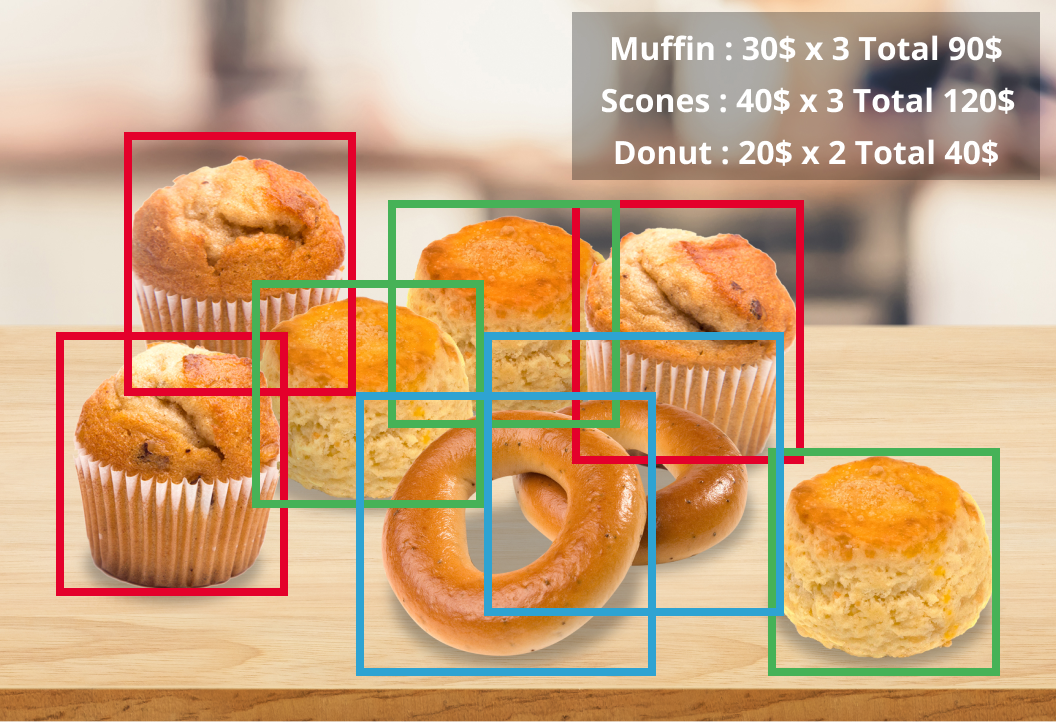
User-friendly vision system interface
Our user-friendly design allows users to label several defect types at the same time, a very convenient feature in applications where multiple defects and features need to be simultaneously classified.
Simple industrial robot and PLC integration
Solvision provides easy integration with more than 20 robot brands and built-in PLC communications through the TCP/IP and Modbus communications protocol at no extra cost, allowing users and system integrators to choose the product that they feel most comfortable with.
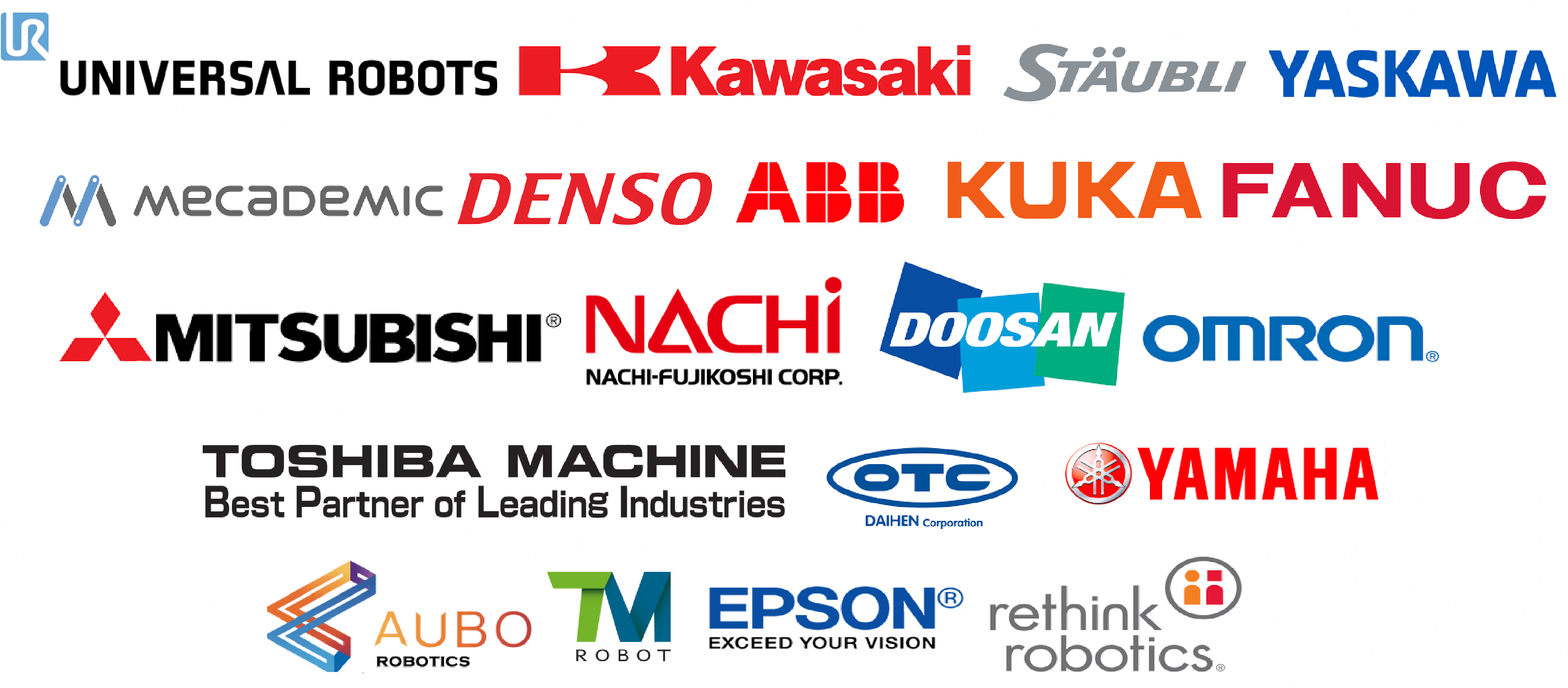
Parallel defect detections
Solvision can select multiple GPUs and graphic cards to disperse the AI computing load, allowing the users to carry out simultaneous detections at the same time.
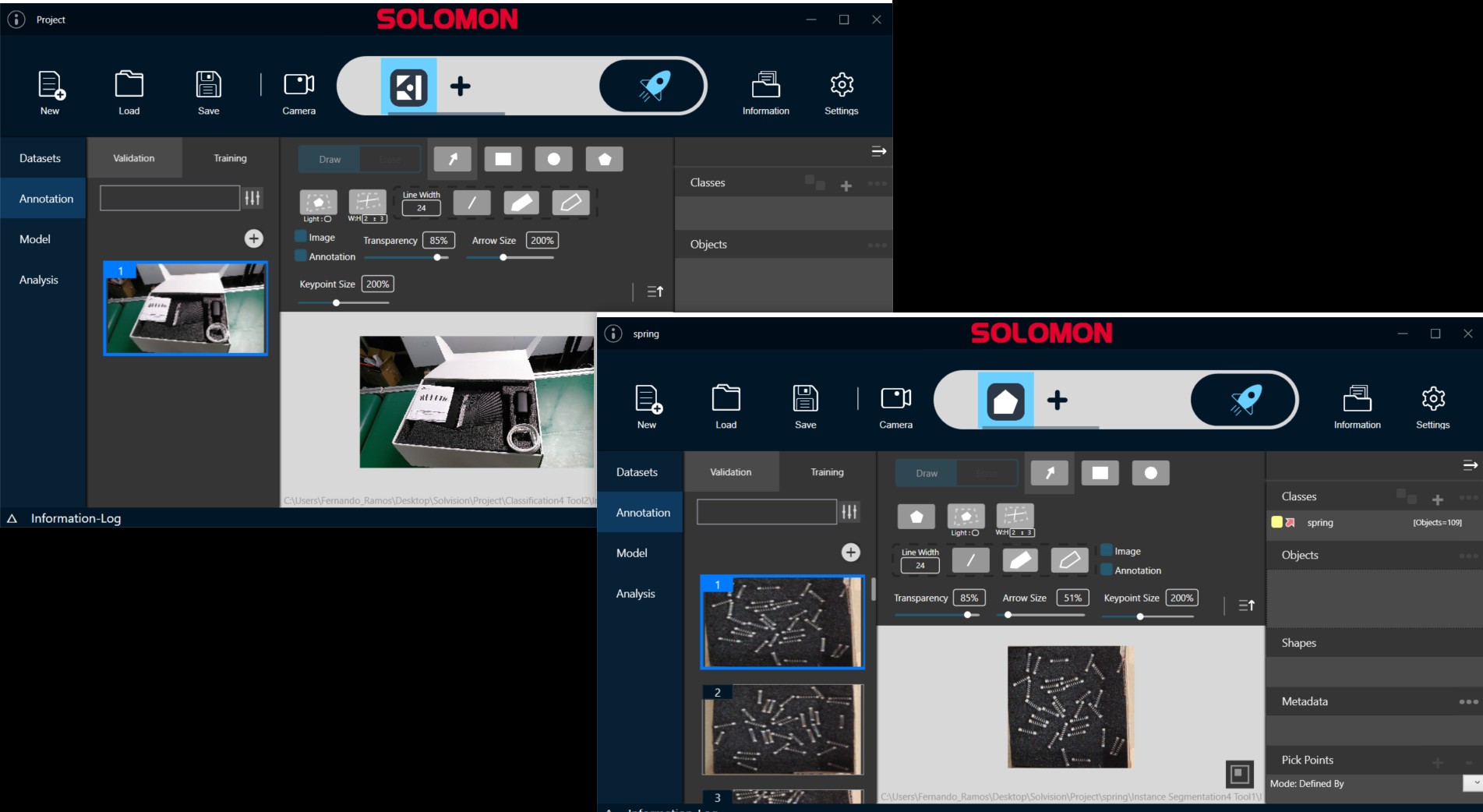

SOLOMON vision AccuPick 2D
VisionRobot vision for the factory of tomorrow
Smart Manufacturing / Smart Logistics
AccuPick 2D significantly enhances the scope of robot applications with an intelligent AI based vision system. AccuPick 2D not only gives robots ‘eyes’ that allow them to see, but also provides them with a ‘brain’ to understand with human-like cognition.
Compared to conventional rule-based vision guided robot systems,
AccuPick 2D offers the following advantages:
Recognizes complex objects and patterns using advanced machine learning
Identifies and locates objects without time-consuming optical system set-up
Works seamlessly with more than 20 robot brands and major PLCs
Friendly GUI to easily build and change workflows
Generates high return on investment (ROI)
Easily Upgraded to our award-winning AccuPick 3D
Superior detection capabilities
Unlike rule-based vision systems that often require optimal ambient lighting, which can be expensive and time consuming to attain, AccuPick 2D works perfectly under unfavorable circumstances, such as subpar lighting conditions or with poor quality images. AccuPick 2D can easily see and locate objects that have been traditionally challenging to work with, including dark, highly reflective, and transparent items. AccuPick 2D supports any GenIcam compatible with a PC-based 2D camera.
Drag-and-drop user interface to build robot applications
AccuPick 2D – Smart Manufacturing / Smart Logistics offers the possibility to give direct commands to robots. Setting them up for different vision applications and workflows does not require intimate knowledge of robot programming. All workflows can be built and changed using a drag-and drop GUI.
Support of more than 20 robot brands in AccuPick 2D
Like AccuPick 3D, AccuPick 2D supports seamless connectivity with more than twenty robot brands and allows direct communications with many major PLC brands. Users can easily upgrade to our award-winning AccuPick 3D Random Bin Picking system. AccuPick 2D and AccuPick 3D software provides a similar user interface, minimizing the amount of time required to get familiar with our 3D vision system.
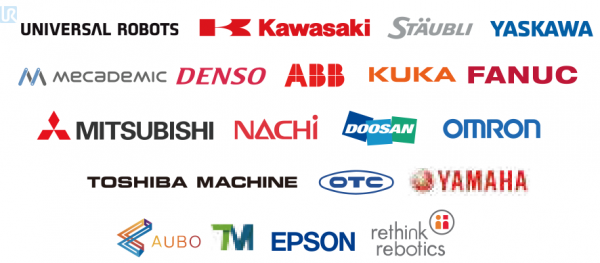

COGNEX In-Sight Explorer Software
VisionEase-of-use is built into the heart of In-Sight vision systems starting with easy to use but powerful vision tools and In-Sight Explorer software interface. A spreadsheet view makes the user experience very simple for maximum control over your optical inspection applications. The In-Sight Explorer software also includes an EasyBuilder configuration environment for deploying reliable applications quickly, with no programming required.

Intuitive, Easy to Use
EasyBuilder configuration software helps users of all experience levels to quickly setup their application—no programming knowledge required. This easy-to-use interface walks you through the process of setting up your vision application, step by step.
Working from an image of the part, four simple steps complete the application setup:
- Start - Find an In-Sight vision system on the network, then be guided through triggering the vision system and setting up scale and nonlinear calibrations.
- Set up tools - After finding the part, a library of more than 22 vision tools is available to inspect the part.
- Configure - A point-and-click communications setup provides easy selection of data to be sent, and the protocol to use for communicating to a PLC, robot, or HMI for data collection and archiving results.
- Finish - In the deployment mode, colorful tool graphics, a results table, and a filmstrip control to review images simplify troubleshooting the application and identifying bad parts.
Setup your own applications to ensure a low cost of ownership
The In-Sight Explorer spreadsheet view provides a robust, flexible and efficient way to configure the vision tools and handle the data created from a vision application. The In-Sight spreadsheet includes specialized functions, options and operations that allow you to solve complex applications without ever writing a line of code.

Ease-of-use for fast deployment
A spreadsheet view of the In-Sight Explorer software interface makes the user experience very satisfying. Drag and drop vision tools and graphics palette along with menu-driven tool property sheets makes job configuration simple. The In-Sight Explorer software also includes an EasyBuilder environment. With no programming needed, applications are deployed quickly.
In addition to Easy Builder, In-Sight Explorer offers a more powerful Microsoft Excel-like environment for configuring more advanced applications. You can take advantage of the EasyBuilder configuration platform along with the power of the spreadsheet view with the flexibility of round tripping back and forth.


soft agile Soft agile metrics SDK
VisionMetrics is a C++ / C# SDK for 3d metrology software development.
The focus of Metrics is performance – reduce cycle times in your inline application.
Metrics is “real” 3d and offers a wide range of algorithms and geometrical functions.
The Metrics IDE CodeX presents more than 150 functionalities of the SDK in its user interface.
Work interactively and let CodeX generate the source code on-the-fly.
Modify and run the source code and let CodeX visualize the results for you.
Create Dlls or C# files and use them in your applications.
Multi Sensor Calibration
Calibrate the pose of 3d scanners and the direction of a transport system, e.g. conveyor belt. Inspect all point clouds in one global coordinate system.

Automatic alignment
Align scan data automatically to a reference object. The reference can be another scan, or it can be a cadmodel. The alignment is fully automatic, there is no need for a prealignment.

Multi-view registration and triangulation
Multi-view ICP (Iterative Closest Point) for surface scans and triangle mesh generation

Cleaning
Remove outliers and points that have been scanned at bad conditions, e.g. at steep scan angles or with reflections on shiny surfaces

Geometries
Find or fit 3d planes, lines, circles, spheres, cylinders and cones in your point clouds.
Measure distances, compute projections, angles or intersections.

CodeX - Metrics development
Work interactively in 3d with CodeX and use the generated source code in CodeX and your applications. Use the full C# language and the complete interface of the Metrics SDK libraries.


WEPALL Universal Palletizing Software
PalletizingCurrently, the implementation of robotic palletizing systems requires the intervention of highly qualified expert programmers.
This affects high costs and total dependence on the integrator for future modifications.
Wepall is an alternative that, in a simple way, eliminates that dependence and drastically reduces costs.
Development of user-friendly applications for industrial robotic programming.
Based on our API, which allows anyone with basic knowledge of computer programming to program industrial robots of different brands, Wepall has developed the first universal palletizing software, an application with which you can design your own pallet formats, generate the code and load it onto the robot of your choice in just a few minutes.
Step#1- Design the line - Easily build your palletizing cell.
Step #2- Create the pallet pattern - Creates successive layers of products according to their characteristics.
Step#3- View the result - Simulates the behavior of the defined pallet with advanced physics.
Step#4- Generate the program - Generate hundreds of lines of editable code with a single click.
No need to know how to program -Defines the products, whether bags or boxes, with size and weight; the various pick-up stations or separators.Select robot and hands or palletizing tools.Configures the palletizing station and the different types of pallets.
Generates mosaics based on product and pallet properties -Sort products on the pallet to make the most of the available space. Creates successive layers of products according to their characteristics.
Define points, movements and more - View the final result of the palletizing process. Check, thanks to the advanced physics of this simulation, the stability of the defined mosaic. At any time, you can go back to redefine and complete the pallet according to your needs.
Generate native code for any robot- With just one click you can generate hundreds of lines of native code for any robot, according to the specifications defined in the previous steps. This code is editable and adaptable to successive changes or particularities of the line.

